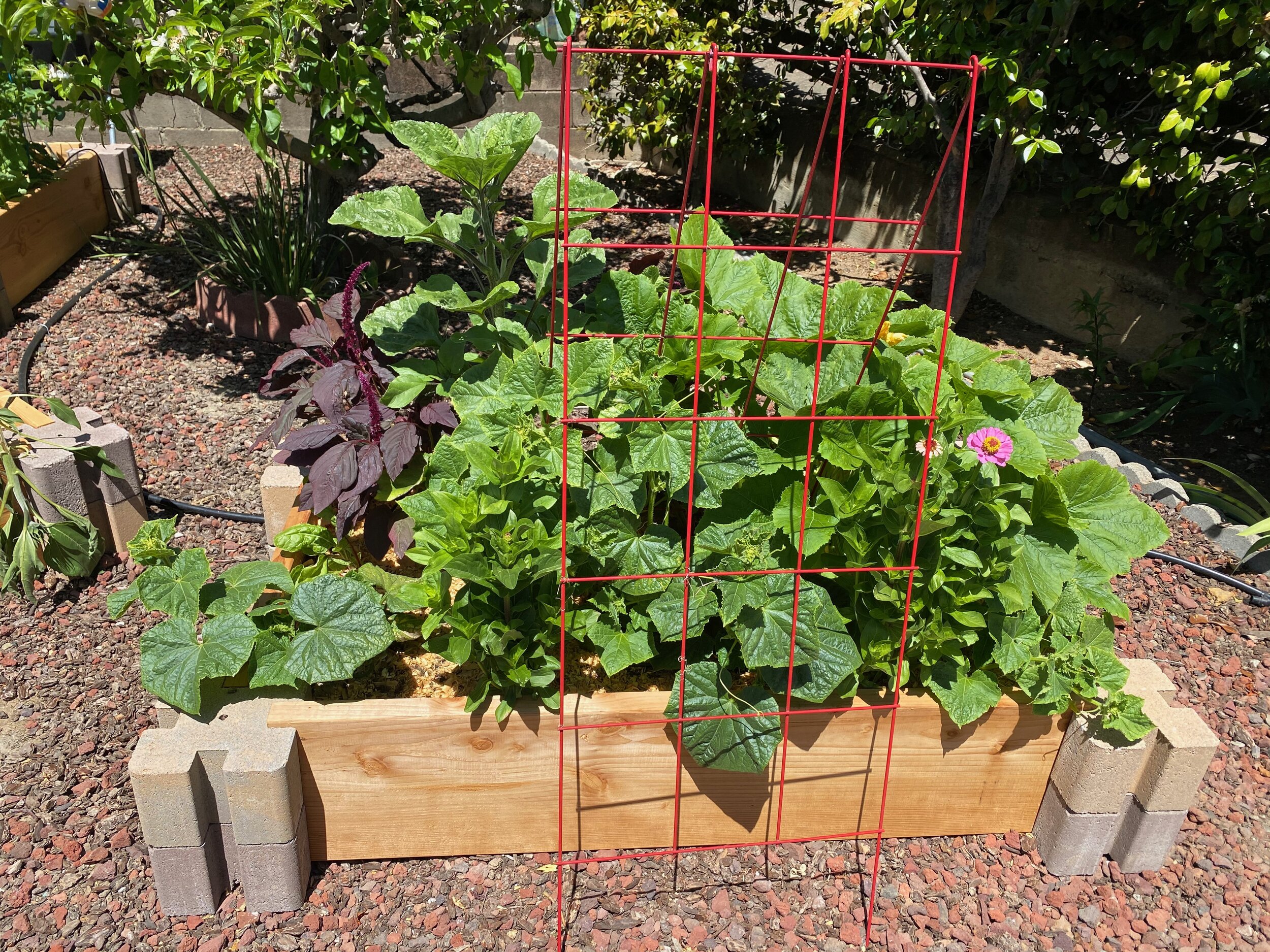The Good Table At Home: Companion Planting
by Kelly Knight, Marketing Manager for The Good Table
In the Garden
I’ve had a garden for many years, but this was the year I decided to get serious about it. It both was and wasn’t because of the pandemic — I’ll admit, it’s nice to have something pleasant to focus on when the world is falling apart; but also, I come from a long lineage of green thumbs, and maintaining a garden feels grounding for me in a way that little else does.
Amaranth, sunflower, cucumber, squash, and zinnia bed - The Good Table At Home
Something new I’m trying this year is Companion Planting. Simply put, Companion Planting is putting different types of plants together in a way that maximizes their harvest in yield, flavor, or pest reduction.
The most often stated example is the Three Sisters Trio: corn, beans, and squash. The corn provides a strong base for the beans to climb, the beans make nitrogen for the soil that helps all three plants to grow, and the squash shades the soil at the base, helping the plants retain moisture and reducing weeds. Squash is also prickly, which keeps away raccoons and other pests.
In the bed in the above picture, I’ve put the taller plants in the back row — amaranth (purple), sunflower (tall), and a crookneck squash in the back right corner. There are cucumbers in the first row, which the taller plants will shade. I’ve also planted zinnias in this bed to attract pollinators. There were nasturtiums in here too, which attract pests away from the vegetables, but they got sun-stressed and didn’t like the denser soil, so they’re in a pot off to the side in a succulent blend soil.
Little Gem Lettuce, Tomato, Parsley, Borage, and Cosmos
In this bed above, I’ve planted tomatoes next to borage, a flowering plant that attracts bees and tiny pest-eating wasps. Parsley also attracts insects away from tomatoes, so I’ve put these plants in between each tomato plant. I’m also going to transplant some dill in here in order to detract aphids and mites. The cosmos attract pollinators.
More parsley and tomatoes, onions, swiss chard, daisies
In the last bed, we planted onions by taking sprouting onions from the grocery store and plunking them in the soil. It’s an experiment. But onions “are thought to protect against borers, mites, slugs, and cutworms, as well as maggots of all types.” We’re planting them with Swiss Chard, which they like, and more parsley and tomatoes. There’s also a watermelon in there. It’s kind of a grab bag because I got a little overzealous with my seed starts this year.
If you’d like to learn more about Companion Planting, here are the two resources I used:
Companion Planting Guide by Farmer’s Almanac
Companion Planting Chart by Live Love Fruit - this one has a map of how you can lay out your beds as well!



